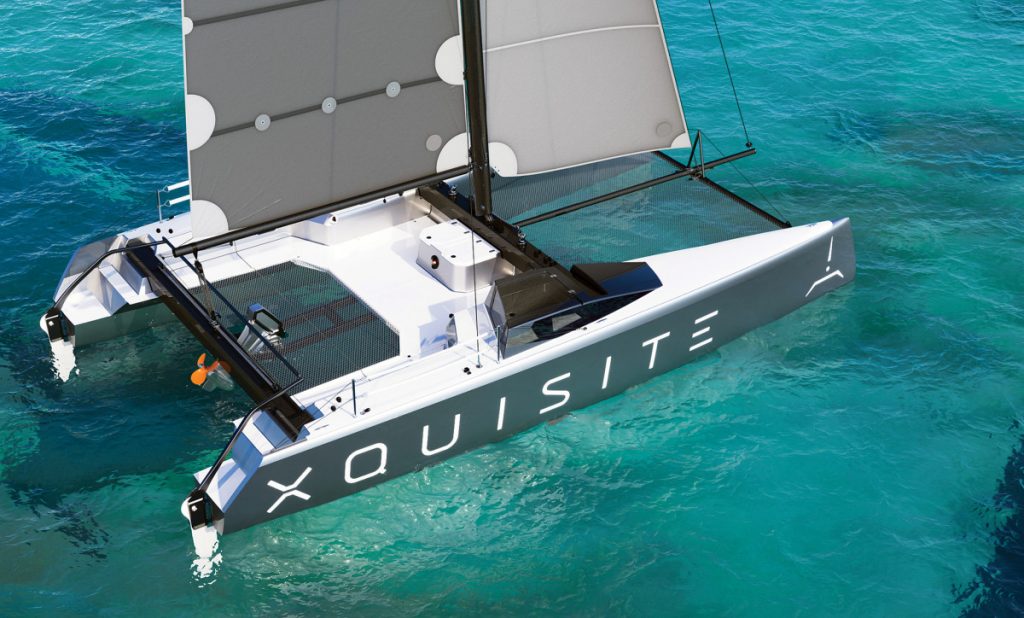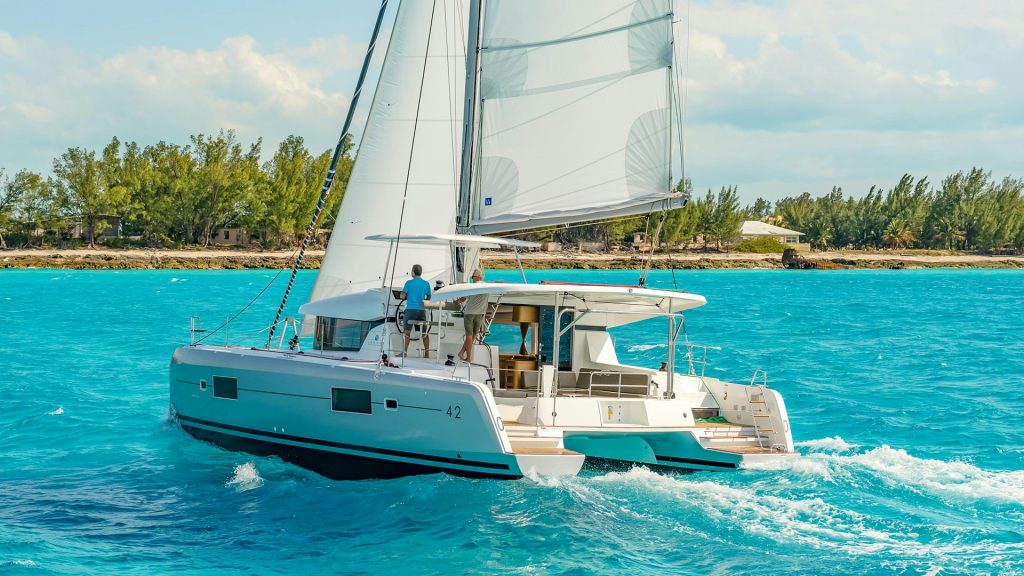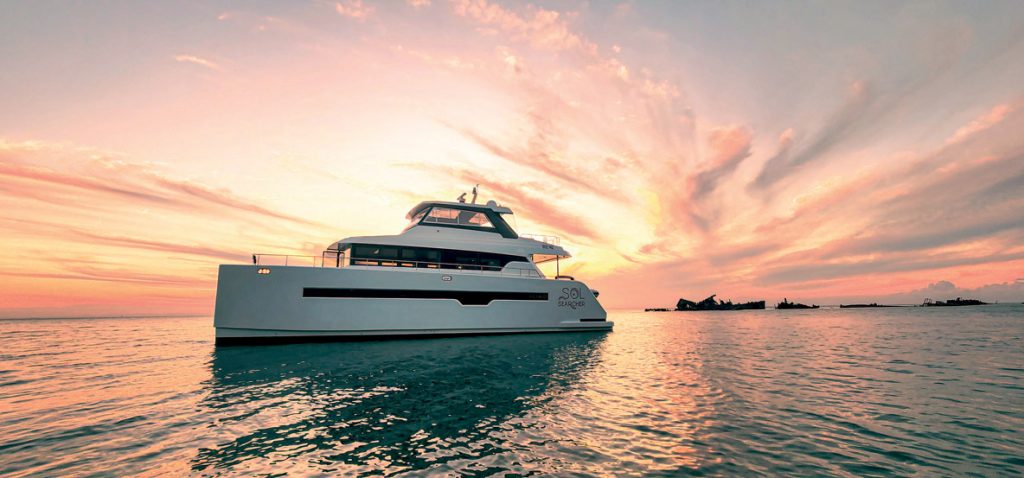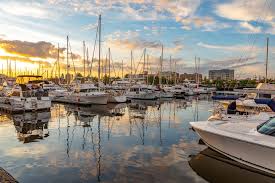Catamaran Boat: A Comprehensive Guide to Modern Multihulls
Catamarans, known for their unique dual-hull designs, offer a stable and spacious experience on the water.

Unlike monohull boats, catamarans have two parallel hulls. This provides excellent balance and minimizes the chances of rolling and overturning. This makes them an attractive choice for those who value comfort and stability while sailing or cruising.
These boats are popular among a diverse group of enthusiasts, from casual sailors to those looking for long-term cruising solutions.

You can find a variety of models and sizes, from small day cruisers to large luxury catamarans. Many brands and models cater to different needs, whether you are interested in speed, comfort, or living aboard.
Catamarans are often favored for their performance and efficiency.
Their multihull design allows for faster speeds and smoother rides, making them ideal for both amateur sailors and seasoned ocean travelers.
Exploring the various types and features of catamarans can help buyers make an informed decision when considering a purchase.

Key Takeaways
- Catamarans have two parallel hulls, providing better stability and balance than monohulls.
- They offer a variety of choices, from day cruisers to luxury models.
- Their design allows for greater speed and smoother rides.
History and Development
Catamarans have a rich history that stretches back to early Polynesian cultures. This history includes the transformation from traditional double canoes to the modern sailing vessels known today.
Origin and Etymology
The term "catamaran" is derived from the Tamil word "kattumaram," which means "logs bound together." Early forms of these vessels date back to the Indian Ocean and were used by the Austronesian people.
They crafted double canoes and outriggers for stability and efficiency in ocean travel.
These early catamarans featured two parallel hulls linked by planks or beams. The design allowed for greater stability in rough seas and improved speed due to reduced drag compared to single-hulled boats. This early ingenuity laid the foundation for what would become modern catamaran designs.

Evolution of Design
In the second half of the 20th century, the catamaran underwent significant design changes.
One notable figure was American engineer Nathanael Herreshoff, who created one of the first modern catamarans named Amaryllis. His work led to increased interest and innovation in catamaran design.
Modern catamarans now boast advanced materials like fiberglass and carbon fiber, making them lighter and stronger. Their wide beams and shallow drafts enable them to sail faster and access shallow waters that traditional monohull boats cannot.
Spanish engineer Leonardo Torres Quevedo also made crucial contributions with his 1916 patent for a twin-hulled ship, known as the "Binave." This design influenced further advancements in catamaran technology.
Catamarans have thus evolved from simple, traditional vessels to high-performance boats used for both recreation and professional racing.
Types of Catamarans
Catamarans come in various types, each designed for specific uses and preferences. The main types include sailing catamarans, power catamarans, and commercial catamarans.
Sailing Catamarans
Sailing catamarans harness wind power for propulsion using masts and sails. They are popular for their environmental benefits and efficiency.
These boats are known for their stability due to the twin hulls, making them safer and more comfortable in choppy waters than monohull boats.
The wide beam allows for ample deck space, which is great for leisure activities like sunbathing or dining.
Auxiliary engines are usually present but only used when necessary, such as when docking or during emergencies. Sailing catamarans are favored for leisure cruising and racing.

Power Catamarans
Power catamarans rely on engines rather than sails. They offer higher speeds and greater control, making them suitable for longer journeys and faster travel times.
These boats are built with twin hulls that provide stability and smoother rides even at high speeds.
The engine power allows for better maneuverability and easier handling, which is beneficial for those who prefer a straightforward boating experience.
Power catamarans are often used for luxury cruising, fishing, and even as private yachts. They offer spacious interiors and are equipped with modern amenities.

Commercial Catamarans
Commercial catamarans are used for transporting passengers and goods. They can serve as ferries, carrying large numbers of people across bodies of water efficiently and safely.
The two-hull design ensures stability, making the journey more comfortable for passengers.
These catamarans are often larger and sturdier, equipped with robust engines to handle heavy loads.
They are also employed in various industries for tasks like fishing, where the stability and ample deck space are essential. Commercial catamarans are built to be reliable, durable, and efficient for business purposes.
Design and Construction
In catamaran boat design and construction, the focus is on hull configuration, materials and building techniques, and aerodynamics and hydrodynamics. Each of these plays a crucial role in the performance, stability, and quality of the vessel.
Hull Configuration
Catamarans have two hulls connected by a deck. This configuration offers several advantages.
Firstly, the dual hulls provide increased stability due to better weight distribution. This makes catamarans less prone to tilting compared to monohulls.
Secondly, the wide beam contributes to enhanced buoyancy, allowing the vessel to carry more weight without sacrificing speed.
The arrangement of the hulls also impacts performance in terms of speed and fuel efficiency. Narrow hulls minimize water resistance, while a carefully calculated prismatic coefficient ensures optimal balance.

Materials and Building Techniques
The choice of materials is vital.
Fiberglass and carbon fiber are common due to their lightweight yet strong properties.
Fiberglass is economical and provides good durability, making it popular for budget-conscious builds. Meanwhile, carbon fiber, while more expensive, offers superior strength-to-weight ratios, enhancing speed and performance.
Construction techniques vary, with cored construction being a notable method.
This involves a sandwich of lightweight core material between two layers of laminate, creating a strong but lightweight structure.
Choosing the right combination of materials and techniques impacts both cost and quality.

Aerodynamics and Hydrodynamics
Aerodynamics and hydrodynamics are critical for maximizing performance.
Aerodynamic design minimizes air resistance, improving fuel efficiency and speed.
Streamlined structures and sails reduce drag, allowing the catamaran to cut through the air effortlessly.
Hydrodynamics focuses on how the boat interacts with water.
Smooth, narrow hulls reduce water resistance and improve overall efficiency. Engineers use mathematical formulas to fine-tune the hull shape, ensuring it provides the least resistance while maintaining stability and buoyancy.
Performance and Specifications
Catamarans boast impressive stability, speed, and maneuverability. Each of these attributes can greatly impact the sailing experience, performance in different conditions, and safety on the water.
Stability and Safety
Catamarans are renowned for their stability. Unlike monohulls, they have two widely spaced hulls which make them less prone to tipping. This design helps to distribute the boat's weight evenly, reducing the risk of capsizing.
Their dual-hull structure also provides more buoyancy and keeps them stable even in rough waters.
This makes catamarans a safer option for families and those new to sailing. The placement of the mast and sail area also contributes to their stability, as the lower center of gravity helps resist strong winds.
Safety is further enhanced by multiple watertight compartments, ensuring that even if one hull is breached, the other can keep the boat afloat.
Speed and Efficiency
Catamarans are known for their speed.
Their lightweight design and efficient sails allow them to achieve high speeds with less wind.
Unlike heavy monohulls, catamarans glide over the water, reducing drag and increasing efficiency.
Modern catamarans often feature advanced materials like carbon fiber, which further reduces weight and improves performance.
Some models, like the 37XPR, are equipped with powerful engines such as Twin Mercury Racing 500R, which can make long trips faster and more enjoyable.
Their dual-hull design allows for better propulsion distribution. Whether powered by sails or propellers, catamarans offer efficient and fast travel, making them a favorite among performance enthusiasts.
Handling and Maneuverability
Catamarans excel in maneuverability.
Their dual-hull setup offers superior balance, making them easier to control than single-hulled boats.
The positioning of twin propellers means they can pivot and turn more precisely.
Sailing catamarans like the Seawind 1600 are designed with bulkhead helm stations, which provide better visibility and control.
This is crucial when navigating tight spaces or docking.
Even under strong winds, catamarans maintain good handling due to their robust sail area and mast configuration. This makes them respond better to steering inputs, ensuring a smoother and safer sailing experience.
Comparison with Monohull Boats
Catamarans and monohulls each offer unique benefits and challenges to sailors and boat owners.
This section explores how these two types of boats differ in terms of stability, comfort, and handling.
Advantages of Catamarans
Catamarans are known for their stability and spaciousness. With two hulls, they offer a more stable platform, minimizing the heeling motion that monohulls experience.
This makes them a safer choice for families, seniors, and those prone to seasickness.
They also have a shallow draft, allowing them to anchor closer to shore where monohulls can’t reach. This enables access to secluded and safer anchorages.
Inside, they provide more living space, featuring expansive deck areas and larger cabins, enhancing overall comfort during long voyages.
Handling Differences
Handling between catamarans and monohulls varies significantly. Monohulls are more responsive to wind and wave conditions, making them more engaging for traditional sailing enthusiasts.
They sail closer to the wind, which can be beneficial when racing or navigating upwind.
On the other hand, catamarans excel in straight-line speed and are generally easier to maneuver in shallow waters due to their twin engines.
While they may lack the tactile "feel" of a monohull, their stability and easier handling make them ideal for cruising, particularly in calmer waters.
Catamaran Brands and Models
Catamaran boats come from a wide variety of respected brands, each offering unique features.
This section outlines some of the most popular catamaran brands and their notable models, providing key details to help potential buyers or enthusiasts make informed choices.
Popular Brands
Lagoon produces some of the best-known catamarans. They have nine sailing catamaran models and two powercats, ranging from 40 to 78 feet. Known for their spacious interiors and robust build, Lagoon boats are highly regarded.
Fountaine Pajot also deserves mention. This brand has a long history of making both sailing and power catamarans. They are known for models like the Tanna 47 and the Bali 4.4, which offer comfort and performance.
Leopard catamarans are designed to handle a variety of waters. The Leopard 40 and other models are celebrated for their sturdy design and innovative features. They are popular both for private use and for charter.
Gemini Catamarans is a trusted name in the U.S. They are known for their affordable, compact sizes and practical features, such as the Gemini 105M. This brand is ideal for budget-conscious sailors who don’t want to compromise on quality.
Notable Models
The Lagoon 380 is a standout model, despite being discontinued. It was known for its compact size and efficient design. The boats range up to the larger Lagoon 78, offering spacious living areas and advanced sailing capabilities.
Fountaine Pajot’s Tanna 47 is among its most popular models. Known for its blend of luxury and performance, it features a spacious cockpit and advanced sailing systems.
The Bali 4.4 offers a different take with added living space and innovative storage solutions.
The Leopard 40 is a compact yet powerful sailing catamaran. With a focus on performance and ease of handling, it’s well-suited for both short trips and long journeys. Other models like the Leopard 50 add more space and luxury features.
The Gemini 105M is notable for its innovation in a compact package. It features a lifting rudder and innovative design elements that make it affordable and functional. It remains a favorite for those looking for a smaller yet efficient catamaran.
Ownership and Purchasing Tips
Owning a catamaran can be a rewarding experience, but it requires careful consideration of costs, maintenance, and buying strategies.
Buying a Catamaran
Purchasing a catamaran involves a significant investment. A well-equipped catamaran, around 42-44 feet, can cost at least $250,000 for an older model. Newer models, particularly those 46 feet or larger, can reach around $500,000. It's crucial to determine your needs and budget before starting the search.
Consider the size, age, and condition of the boat. Used catamarans generally range from $134,000 to $467,000 for 30-45 feet models. Some may be as low as $29,000, while top-of-the-line models can go up to $848,000. Make sure to inspect the boat thoroughly or hire a surveyor to ensure the quality and condition match the price.
Maintenance and Upkeep
Maintaining a catamaran involves regular checks and repairs. The upkeep costs can vary but usually include expenses for gas, docking, insurance, and routine maintenance.
Keeping the boat clean and addressing any minor issues early can prevent larger, more costly repairs later on.
It's important to budget for ongoing maintenance costs, which might include engine servicing, sail and rigging inspections, and hull cleaning. Additionally, setting aside funds for unexpected repairs can save money and headaches in the long run.
Regularly inspecting the boat ensures it remains in good condition and prolongs its lifespan.
Use and Applications
Catamaran boats are valued for their diverse uses, from leisurely cruising to competitive racing. They provide a comfortable sailing experience, are thus ideal for recreational use, racing, and even as living spaces on the water.
Recreational Sailing
Catamarans are becoming increasingly popular for recreational sailing thanks to their stability and spaciousness.
Equipped with multiple cabins and staterooms, they offer ample space for families or groups. Many catamarans feature luxurious amenities like full kitchens, entertainment systems, and even hot tubs.
These vessels are perfect for cruising coastal waters and exploring islands.
Their shallow draft allows them to navigate closer to shore, providing more anchoring options. This makes them ideal for activities such as fishing and snorkeling.
The dual-hull design reduces wave impact, making for a smoother ride even in choppy waters.
Racing Events
In racing, catamarans are known for their top speeds and superior performance.
These boats can be designed to be incredibly light and agile, allowing them to shave crucial seconds off race times.
Competitive sailing catamarans are often equipped with advanced materials and technology to enhance speed and maneuverability.
Speed is a primary focus, with streamlined hulls reducing drag. The design enables them to achieve high velocities, making them favorites in races like the America's Cup.
The dual-hull setup also provides a more balanced platform, reducing the risk of capsizing even under challenging conditions.
Multihull Living
Catamarans are not only for sailing; they also serve as comfortable homes on the water.
The spaciousness and stability make them ideal for long-term living.
These vessels often come with multiple levels and separate living areas, offering more privacy and comfort.
Living aboard a catamaran combines the adventure of sailing with the comfort of modern living.
Many catamarans are equipped with complete kitchens, bathrooms, and living spaces, allowing for extended cruising without sacrificing everyday conveniences.
This makes them an excellent choice for individuals or families looking to live on the water, enjoying both remote locations and busy marinas.
Technical Aspects
Catamarans have specific technical features that set them apart from other boats. These include advanced navigation systems and various propulsion options, which cater to different needs and preferences.
Navigation and Electronics
Modern catamarans come equipped with sophisticated navigation systems. GPS and radar are standard tools.
Chart plotters help sailors map out their course, ensuring precise navigation.
Another crucial element is the autopilot system, making long journeys more manageable. These systems are highly reliable and essential for offshore sailing.
Enhanced safety features like automatic identification systems (AIS) help in avoiding collisions by tracking other vessels.
Additionally, depth sounders and fish finders are often integrated, offering valuable information about the underwater environment. This is particularly beneficial for navigating through shallow waters.
Propulsion Systems
Catamarans often utilize dual engines, typically located in each hull. This setup not only provides redundancy but also improves maneuverability.
Inboard engines are common. Diesel engines are popular due to their efficiency and durability.
Some modern catamarans are exploring electric propulsion systems. Electric engines offer a quieter and more eco-friendly alternative, which is becoming more attractive as technology advances.
Power catamarans are designed for higher speeds, using more powerful engines to achieve this. Their lightweight and unique hull design reduce displacement, allowing them to cut through the water more efficiently.
Challenges and Considerations
Catamaran boats offer many benefits but come with their own set of challenges. These challenges include precise docking, managing space, and dealing with specific weather and sea conditions.
Docking and Storage
Docking a catamaran can be challenging due to its wide beam and dual hulls. These boats often require more space than monohulls, making them harder to dock in narrow marinas.
In many marinas, appropriate docking spots might be limited, requiring advanced reservation. Also, twin engines and dual hulls can complicate tight maneuvering, needing more skill and experience.
Additionally, catamarans need wider berths, which can be more expensive. Storage demands careful planning since equipment must fit within the dual-hull design. Owners should also consider safety aspects such as redundancy of systems and securing items to prevent shifting during travel.
Weather and Sea Conditions
Catamarans handle differently in varied sea and weather conditions. Their wide beam offers better stability, reducing the risk of capsizing. However, rough seas can still present a challenge.
In high winds or during storms, catamarans might be more stable than monohulls, but they are not immune to severe weather. Strong seas can cause discomfort and seasickness for those on board.
Sailing in shallow waters is easier due to their shallow drafts, but extra caution is needed in rough conditions to ensure safety. Navigation and weather planning become crucial to avoid dangerous situations. Ensuring the vessel is well-maintained helps mitigate risks associated with changing weather.
Cultural Impact
Catamarans, with their unique design and practicality, have made their mark in popular culture and have influenced maritime activities around the globe.
Catamarans in Popular Culture
Catamarans often appear in movies, books, and TV shows, showcasing their sleek design with parallel hulls and wide beams. This unique structure offers a comfortable ride, making them attractive for recreational sailing and high-profile events.
In some films, catamarans are shown as luxurious yachts, symbolizing wealth and adventure. They also feature in competitive sailing sports, such as in the SailGP grand prix races, captivating audiences worldwide with their speed and agility.
Television programs focused on travel and exploration often highlight catamarans for their spacious decks and advanced designs. These appeal to adventure seekers who value both comfort and performance on the water.
Global Influence and Usage
Catamarans are widely used across various countries for different purposes, reflecting their versatility and appeal. In the Philippines, traditional catamaran-like boats, such as the bangka, play a crucial role in daily transport and fishing.
In Spain and other parts of Europe, catamarans are popular for coastal tours and charter services. Their stability and spaciousness make them ideal for tourism and leisure cruises.
Modern catamarans are also adopted for competitive sailing, with events like SailGP highlighting their speed and environmental benefits. The dual hulls reduce water resistance, making them faster and more efficient, which is important for both racing and sustainable sailing practices.
Frequently Asked Questions
Catamarans are popular for their stability, ample space, and performance. The following subsections address common queries about their features, uses, costs, and safety considerations.
How do you distinguish between a catamaran and a trimaran?
A catamaran has two parallel hulls while a trimaran has three. The third hull in a trimaran is usually smaller and helps with stability. Catamarans are wider and often offer more deck space compared to trimarans.
What are the advantages of purchasing a catamaran for fishing?
Catamarans offer a stable platform, which is great for fishing. Their wide beam reduces rocking, making it easier to fish, even in rougher waters. The spacious deck and storage areas are also beneficial for handling fishing gear.
What factors affect the price of a catamaran?
Several factors influence the price of a catamaran. These include the size, age, and materials used in construction. Additional features such as luxury cabins, advanced navigation systems, and customization options can also impact the cost.
Are there significant differences between a small and a large catamaran in terms of handling?
Yes, there are differences. Smaller catamarans are generally easier to handle and maneuver. Larger catamarans, while providing more space and amenities, may require more experience and possibly a crew to operate effectively.
How do catamaran tours differ from traditional boat tours?
Catamaran tours offer a smoother ride due to the twin hulls, which provide better stability than single-hull boats. They can access shallow waters, making them ideal for exploring coastal areas and reefs. The spacious deck allows more room for passengers to move around.
In terms of stability and safety, how does a catamaran compare to a regular yacht?
Catamarans are typically more stable than regular yachts due to their wide beam. This reduces the chance of capsizing.
Their structure also allows them to handle rough seas better. However, in very high winds or waves, both types of boats need careful handling.
Charlie is Editor-in-Chief of Sea Magazine







